February 21, 2025
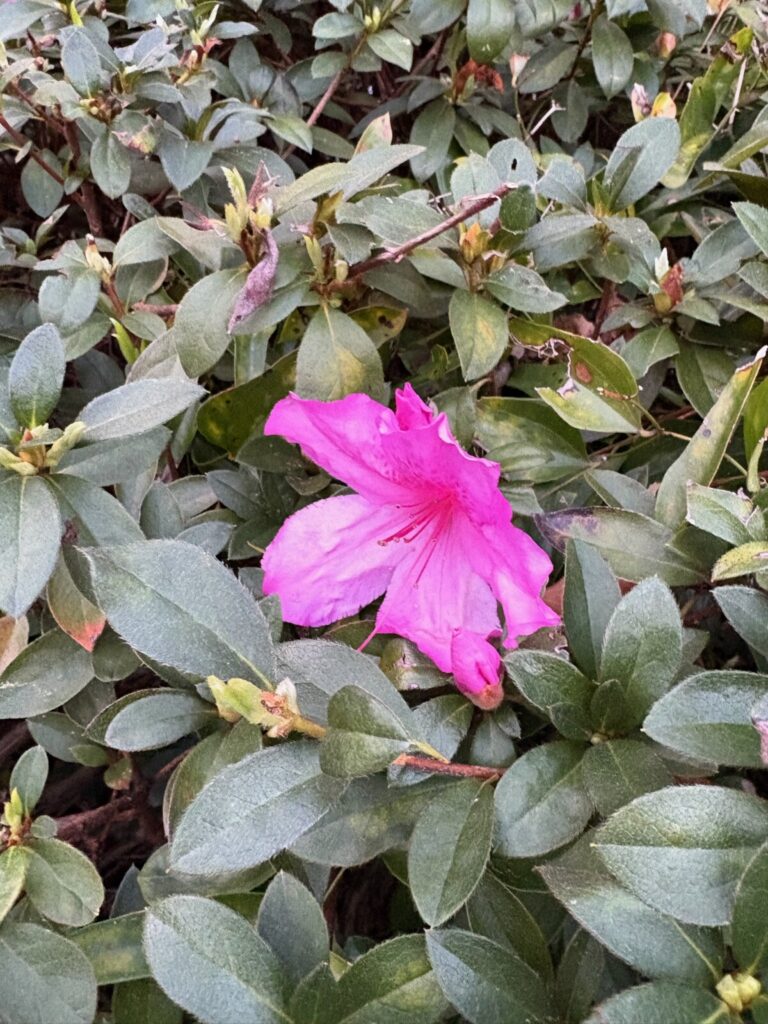
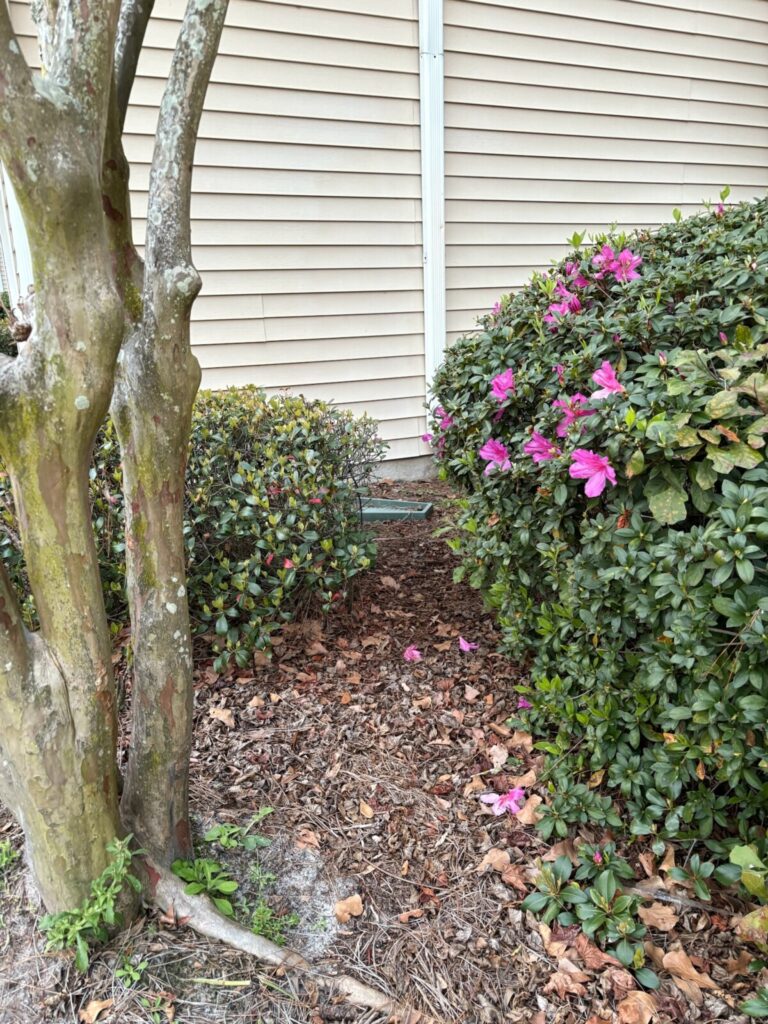
Azaleas in bloom! It is so early to see this. This must be an early blooming variety. Keep an eye out for your azaleas to begin blooming soon. We have wild, native varieties that you may see in wooded areas, but they tend to be conspicuous.
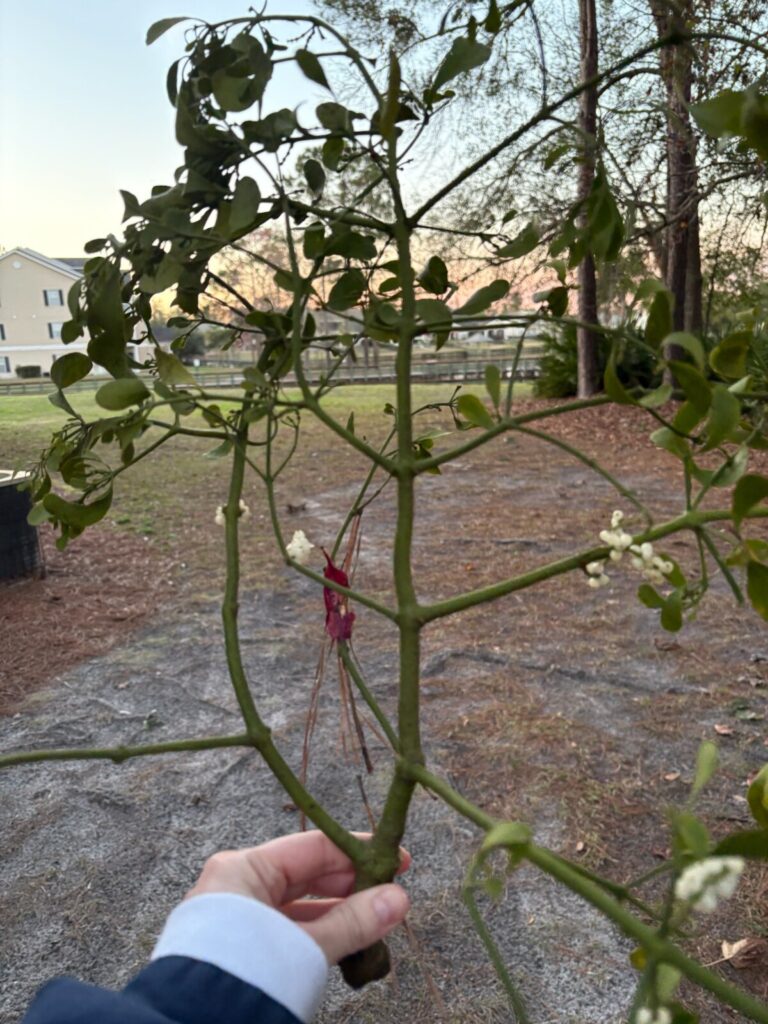
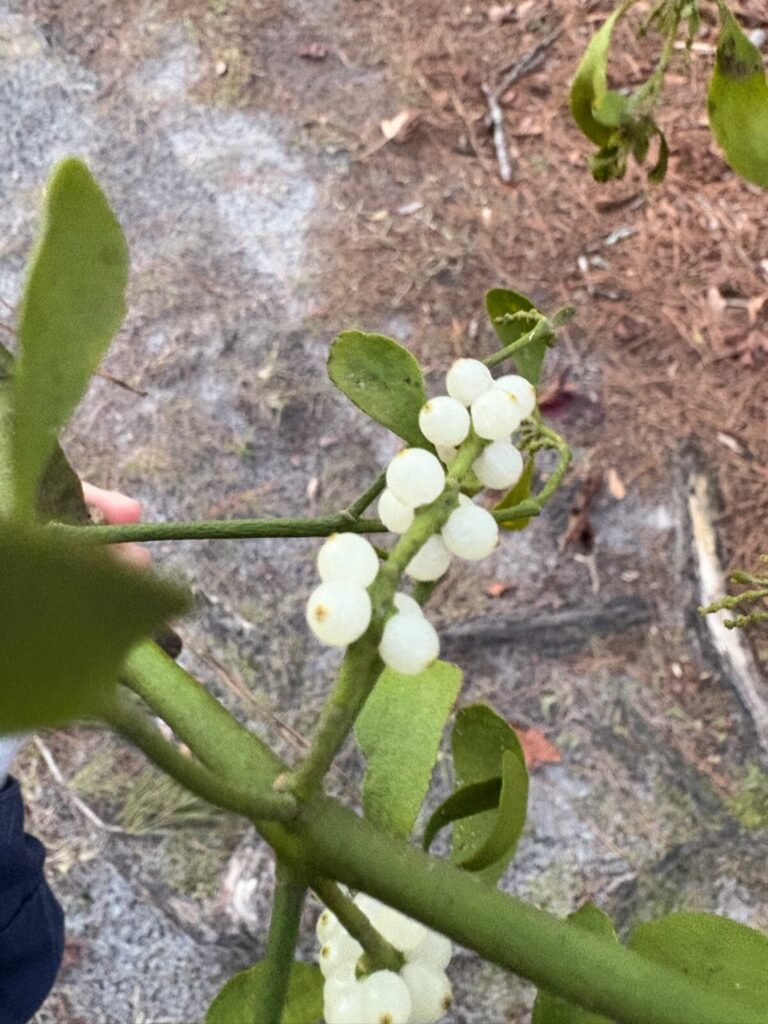
This Mistletoe must have been knocked out of the tree by some critter. My apartment complex does have a landscape service, but they didn’t prune any of the trees around this site. Mistletoe is a parasite! It moves easily by way of birds and mammals enjoying the berries. It will put out roots that break into the tree and absorb the tree’s hard earned nutrients. I felt this was a cool find as they are usually only spotted high up in the tree canopy.
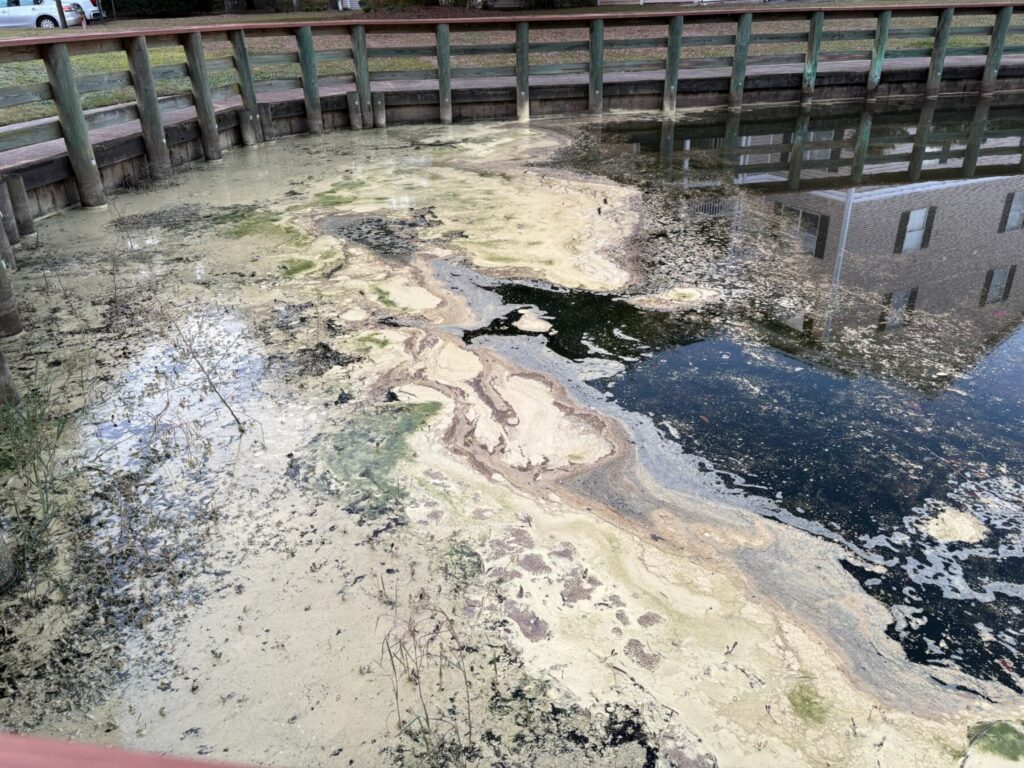
This yucky mass is full of interesting finds! Most notably is the pollen covering the surface. Again, this is so early, but our pine trees don’t know a time of year and follow the weather patterns. If you haven’t already, you’ll see your cars covered in this yellow allergen soon.
The debris floating on the pond surface blows into this corner. We often see trash washing up here, but that means sediment is moving too. The plants coming up on the left side of this image are semi-aquatic meaning that they are sometimes in water, sometimes out of the water. The sediment has piled up in this corner and has started turning into a mini-wetland! Our softshell turtles and fish love to hang out here to find food and take advantage of the safety from wind and wide open pond.
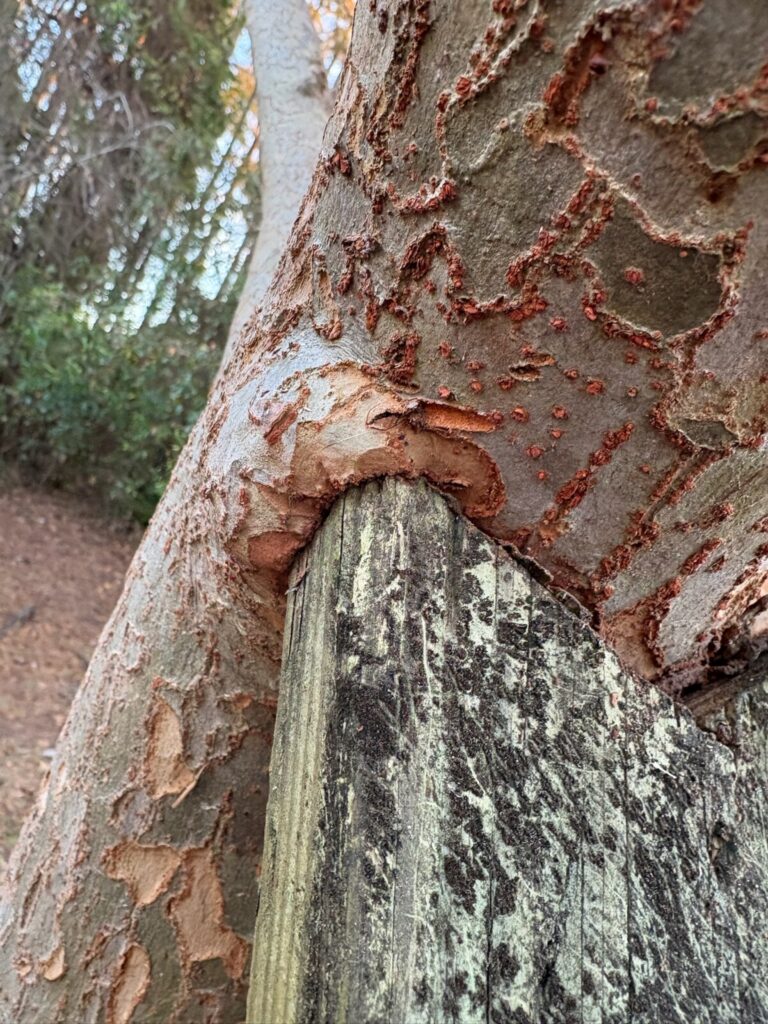
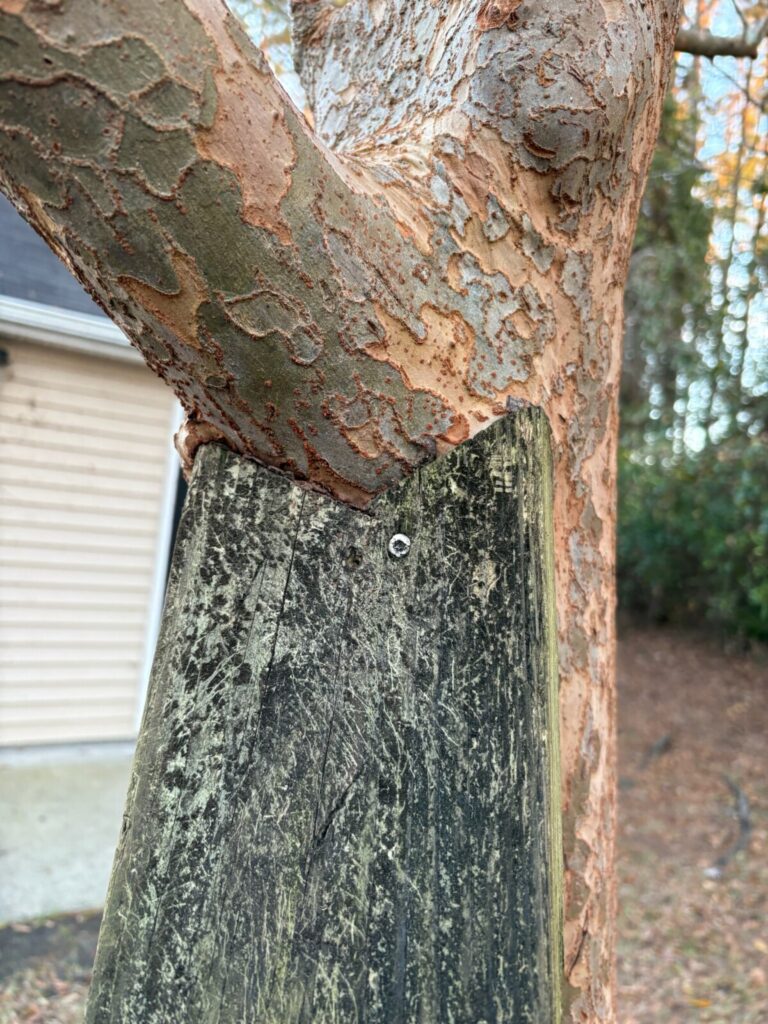
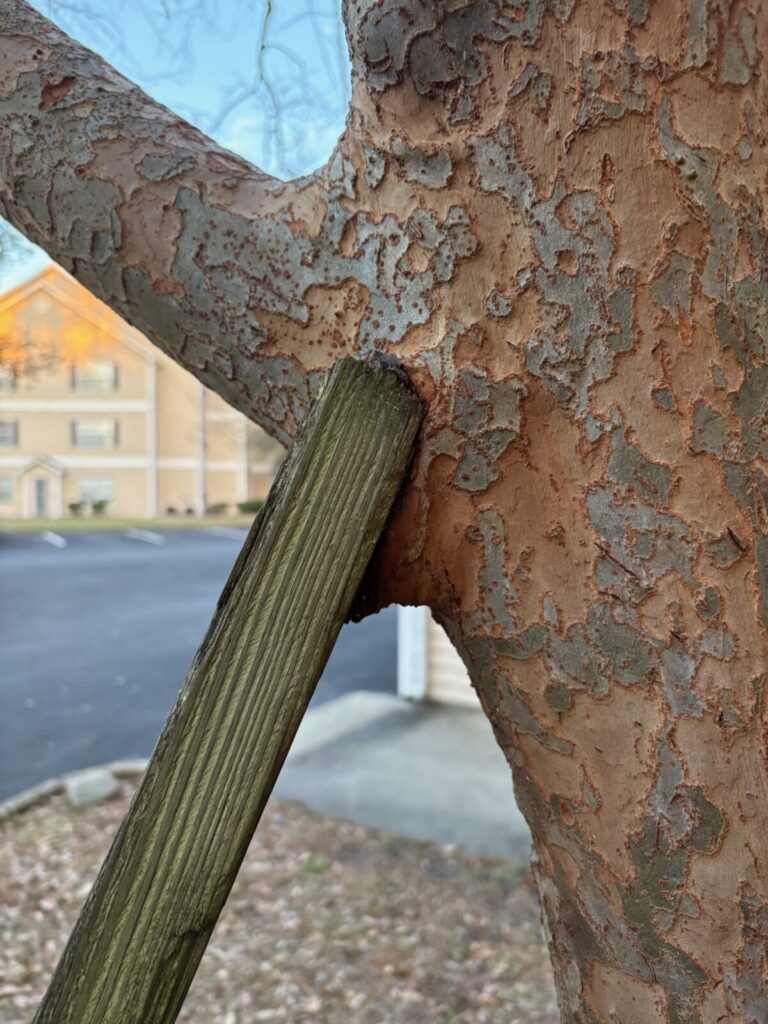
Hmmmm…. I think this prop is well past the opportune time to remove. In fact, the tree has grown around it enough that removal would cause damage to the tree if it could be done now. Let this serve as a reminder to check on trees you have propped up, tied down, or even added things to the bark (like birdhouses, silly faces). Reassess your landscape goals and consider calling an arborist. Arborists will help to determine the tree’s overall strength. You may be able to remove props before they get absorbed like this one, but contacting a professional is the best way to begin. As for this tree, located at the very back of the apartment complex, it will likely have this prop until it rots away.
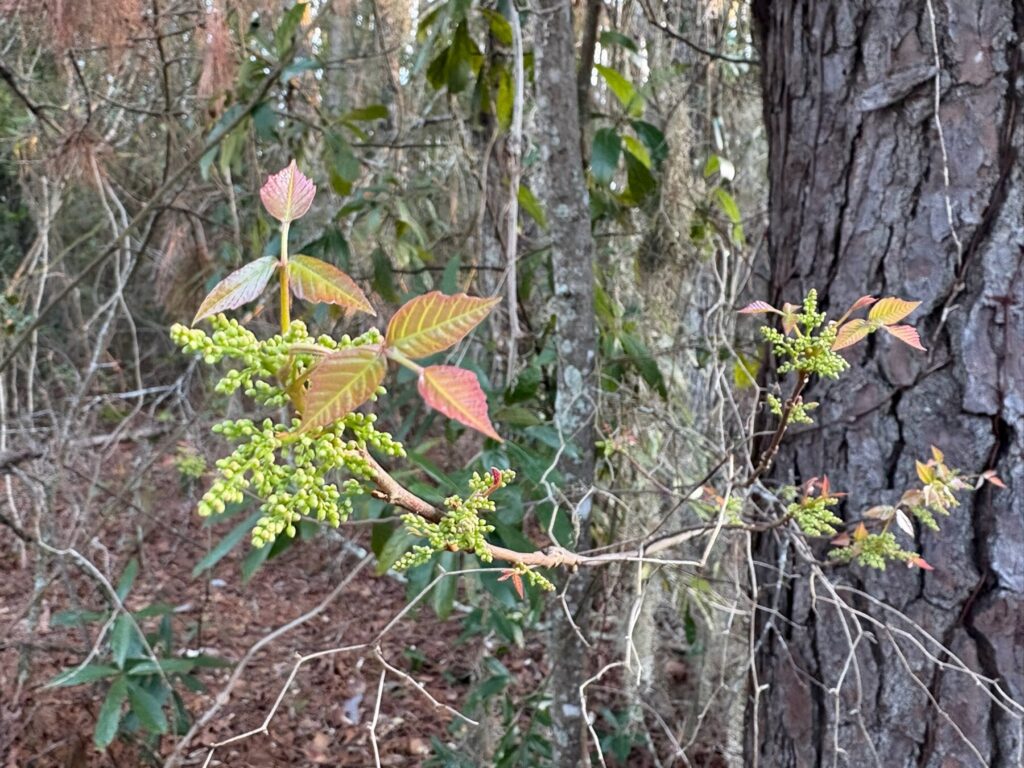
This bright and beautiful pop of new growth caught my attention. For a moment I pondered what it could be, but very quickly realized that this must be developing Poison Ivy. A quick image search using Google Lens confirmed my suspicions. Thankfully I didn’t pull my usual move of touch the plants I am inspecting! While we have these warmer days and you start adventuring outdoors, remember to keep an eye out for this rash inducing vine that could be growing on any trees.
*Google Lens is not the only app you can use to search using a picture. This just happens to be my personal favorite. Other apps commonly used include, but are not limited to, iNaturalist, Seek, Picture This, and PlantNet.*
February 13, 2025

This is a mole tunnel. The route that it takes perfectly follows old edging. Prime example that simple methods of exclusion can help keep moles out of your landscape. This mole hit the edging, turned right, and continued on searching. Moles are searching for underground bugs and grubs. Mammals can be extremely difficult to control. They really do what they want. Some of the best recommendations are to set traps along the tunnels or use exclusion methods like this example. You will also find treatment for grubs and mole crickets is a common method used for control. This follows the line of thought that if you remove the food source, they will move away. I’m not as fond of this method because you are blindly treating your lawn, but it is a decent guess. Additionally, there are gel worm baits that can be dropped into the tunnels to trick the moles into consuming harmful chemicals.
I say, leave them be. They are plentiful in Glynn and McIntosh Counties. You’ll fight one and then have another one soon after.
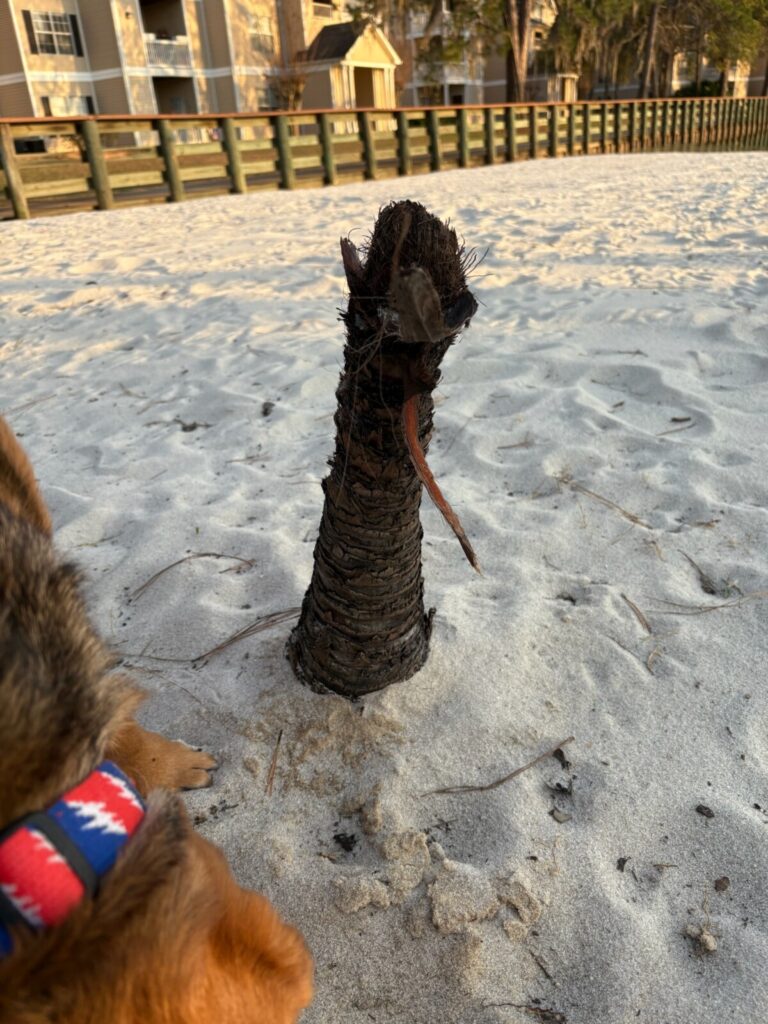
This palm is so dead. I’m so curious to monitor why it is still here. Maybe the landscapers know something I don’t! Either way, the dogs love to use this as a pee spot, so you can see our dog, Trooper, smelling around.
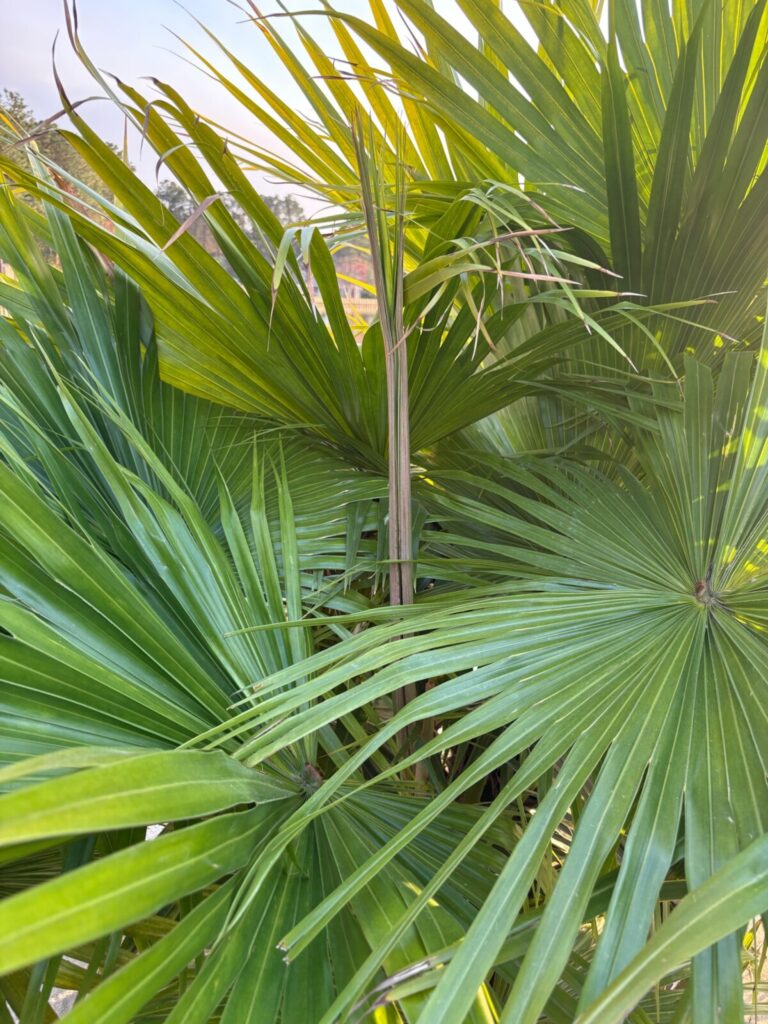
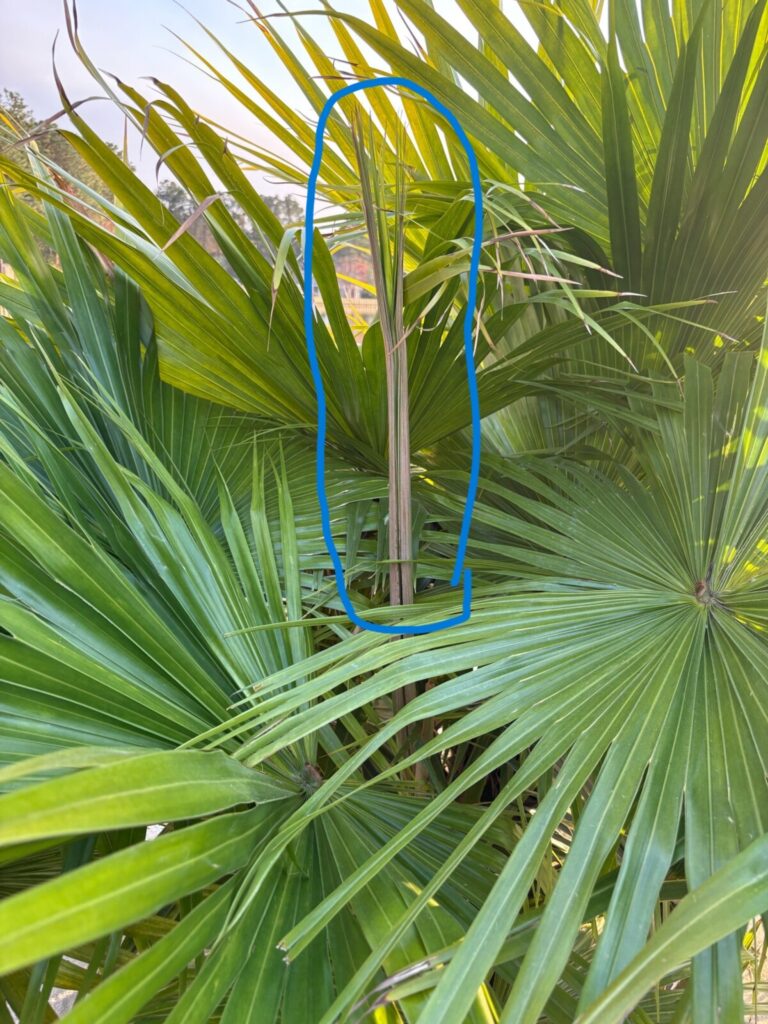
Just next to the dead one, is this beautiful fan palm. The spear in the middle is a key sign of a healthy palm. As long as this apex is present, you will see new fronds develop. New fronds grow from the central grow point at the top of the trunk. If it is absent and the lower fronds look diseased or dead, you likely have a dead palm on your hands.
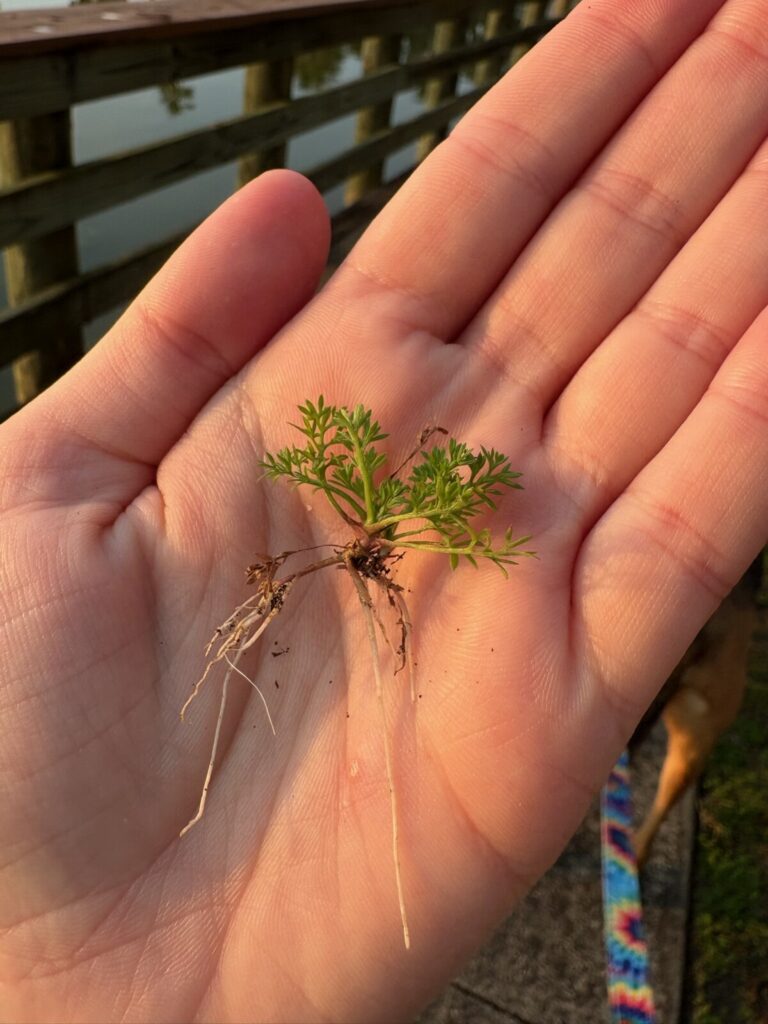
Lawn Burweed. Ugh. You know this one. This is the weed that produces those spiky seeds that get attached to everything and hurt bare feet of all kinds. This is a winter annual weed. That means that it looks lush and beautiful right now. As temperatures start to warm up in the upcoming months, these weeds will start to produce those evil burs. The best way to control for these weeds is to maintain a strong, healthy lawn. You can find calendars for our warm season grasses here to see our best recommendations what to do and when. If you have a weak lawn that cannot fight off the weeds for space, you need to treat NOW.

This is the Lawn Burweed seeds. See, you do know it.

I am totally geeking out seeing this Lawn Orchid! When I first started working for UGA Extension those early calls were extra difficult. This was one of the first requests for identification that came to me in email. I felt so accomplished figuring out what this tiny flower was. Yet, this is my first time seeing one in person! Not only is this a beautiful and quaint bloom, but it holds some special significance meaning to me. Take a closer look to see if you can find them in your lawn too.